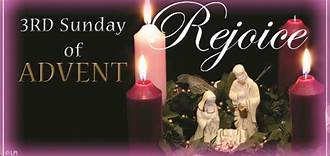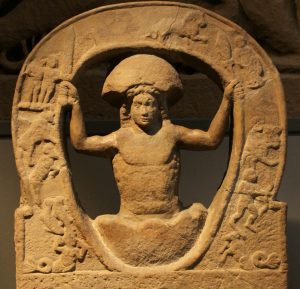Third Sunday of Advent

As early Christians came to celebrate the Birth of Christ at the same time that many Romans around them were celebrating the Birth of Mithras on December 25th (both were mystery religions at the time, and there are many correspondences between the two stories- virgin birth, birth attended by shepherds, performed miracles, sacrificed himself for the world, called “the Way, the Truth, and the Light”, and the Good Shepherd,  Mithraism used baptism and a shared supper, Sunday was his day, he had 12 disciples, etc.) they worried less about when precisely the birth took place, and simply celebrated the fact of the birth at a convenient time.
Mithraism used baptism and a shared supper, Sunday was his day, he had 12 disciples, etc.) they worried less about when precisely the birth took place, and simply celebrated the fact of the birth at a convenient time.
Bishop Perpetuus of Tours established a 40 day Lenten style fast for his diocese in 490 c.e. in preparation for the holy day. This preparation period spread through France and Germany, mostly among monastic orders. In Spain they fasted leading up to Epiphany. When the idea reached Rome in the 7th century, Pope Gregory reduced the period from six to four weeks and developed the liturgy. The period was called “Little Lent” or “Saint Martin’s Lent” (since it started after Martinmas. It’s probably important to note for modern people who often fast (go without food) for medical reasons that this fasting was abstinence from recreational activities, sex, and certain foods, such as meat. Even then, fast days were only three times a week (think going vegetarian every other day). The Orthodox church begins the Christmas fast on November 14th.
Folk ways over the centuries have often included the sharing of plays, music and nativity scenes. In earlier periods, these were important to spread the stories surrounding Christmas to illiterate folk. We see them continue in los Posadas and Creches/ Putzes.
